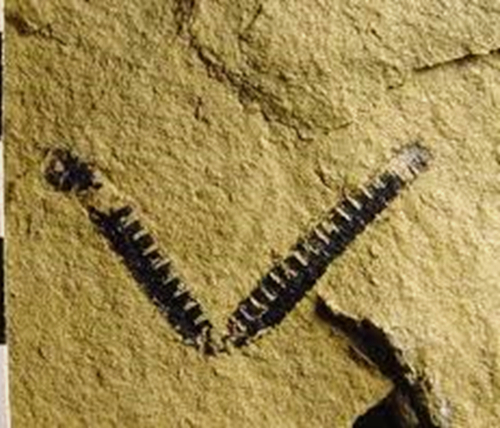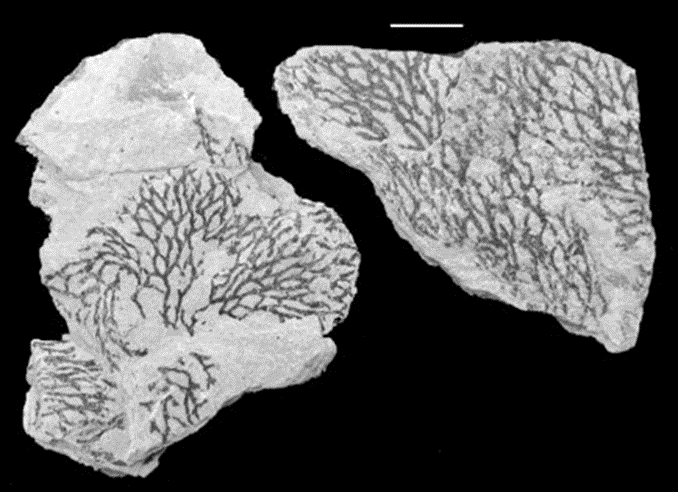Phu Ngu Fm
Type Locality and Naming
The type section is located Phu Ngu Section, lying along the car road from Gia Tong, through Phu Ngu to Cho Chu, Bac Kan Province (N = 21° 53’; E = 105° 46'). This formation was described by Pham Dinh Long et al. (1969) and named from its stratotype location.
Synonym: Dévonìen (part.).-'Patte E. 1927. Diệp thạch Sông Hiển (part.): Vasilevskaia E D. 1962 (T). Điệp Phú Ngữ-. Phạm Đình Long et al. 1968,1969,1970 (0 2.j); Phan Cự Tiến et al. 1988 (O-S). Điệp Sông Hiến (part.): Vasilevskaia E D. (Dovjjkov A.E. et al. 1965) (Ti.í). Hệ tầng Hà Giang (part.): Trần Văn Trị et al. 1973,1977 (£2); Phan Cự Tiến et al. 1988 (e). Hệ tầng Nà Hang (part.): Dovjikov A. E. và nnk. 1965 (PR). Hệ tầng Phủ Ngũr. Phạm Đình Long êí ữ/. 1971, 1974 (02-Si); Trần Văn Trị et al. 1973, 1975, 1977(02); Nguyễn Kinh Quốc et al. 1973,1974 (O2 - S1); Nguyễn Văn Trang eí aỉ. 1973, 1975 (O2 - S1); Phạm Văn Hoàn et al. 1974, 1982 (02 - S1); Phạm Kim Ngân et al. 1980 (Dương Xuân Hảo et al. 1980) (¿2), 1982 (02.3); 1986 (Or S,); Lương Hồng Hược et al. 1987 (Lê Hùng et al.) (02), 1993 (O2-S), 1995 (Tống Duy Thanh et al.) (O-S)); Trần Xuyên el al 1988 (0 - S); Vữ Khúc, Bùi Phú Mỹ et al 1990 (O - S); Vũ Khúc et al. 1990 (O2 - S)); Nguyễn Đình Cần et al. 1994 (o' - S); Nguyễn Văn Hoảnh et al. 1998 (0-S); Lê Văn Giang et al. 1998,1999 (O – S1). Hệ tầng Pia Phương (part.): Vũ Khúc, Bùi Phú Mỹ et al. 1990 (S2 - D1). - Hệ tầng Tòng Bá: hệ Văn Giang et al. 1998 (O - S). Hệ tầng Tùng Bá (part.): Tạ Hoàng Tinh et al. 1976 (O- S).
Loạt Tòng Bá (part.): Tạ Hoàng Tinh và nnk. 1971 (Du); Lê Văn Giang và nnk. 1998 (Hệ tầng, O-S); Hoàng Xuân Tình và nnk 1976 (Hệ tầng - O-S); Vương Mạnh Sơn và nnk. 2001 (Hệ tầng - D1?). Trìassiques (part.): Bourret R. 1922
Lithology and Thickness
Claystone and fine-grained sandstone: Clayey shale, silty sandstone. With a thickness of 2300-2400 m, the Phu Ngu stratotype is composed of two distinct parts. Lower part includes clayey shale, cherty-clayey shale rhythmically interbedded with silty sandstone, locally with lenses of limestone and mafic volcanics, 1100 m thick. Upper part comprises silty sandstone interbedded with clayey shale and cherty clayey shale, locally with lenses of limestone and felsic volcanics, 1200 m thick.
Relationships and Distribution
Lower contact
The lower boundary of the Phu Ngu Fm has not been observed because of faulting. Regionally, the next older unit is the Na Mo Fm.
Upper contact
Unconformably underlies Devonian formations in type area (Si Ka Fm or Van Canh Fm). Regionally, the next younger unit is the Kien An Fm of late Silurian.
Regional extent
The Phu Ngu Fm occurs in two bands located in two different structures. The first extends from Dai Tu (Thai Nguyen Province) through Cho Ra (Bac Kan Province), Bac Me to Tong Ba areas (Ha Giang Province). This distribution area, 50 km in width and hundreds of km in length, is controlled by two curved faults, easterly trending on their convex side. The second band, 20 km in width, 120 km in length, extends from Luong Mt through Ngoi Nac, Vinh Tuy to Huong Son areas (Ha Giang Province), controlled in the east by the Song Lo Fault, in the west by the Co Van - Tien Yen Fault and in the north by the Yen Binh Xa Fault. Besides, there is a small exposure near the Na Ri District center (Bac Kan Province), on the road from Na Ri to Binh Gia Townlet.
GeoJSON
Fossils
The most widespread fossils in the formation consist of graptolites, which date the host sediments as Ordovician - Early Silurian. In the stratotype Climacograptus sp., Glyptograptus sp., Monoclimacis sp. were collected, while in the Na Tuong Section (Bac Kan Province)- - Diplograptus sp., Climacograptus latus, Climacograptus cf. scolaris, Glyptograptus sp., and Ptilograptus sp. are present. Other fossils give a similar age, such as trilobites Agnostus perrugatus, Remopleurides aff. salteri collected from Na Tuong Section; Nileus sp., Asaphus sp., Isalaux sp. (of Middle Ordovician age after Maximova Z.A.) from the NE Cho Moi area (Pham Dinh Long et al. 1968, 1970); Tomasina sp. (Early Ordovician after Duong Xuan Hao) from Phu Thong (Nguyen Kinh Quoc et al. 1974).
[Figure: Phú Ngữ Fm (O3-S2 pn): Silurian: Graptolites Climacograptus sp., (images courtesy of Prof. Ta Hoa Phuong, Vietnam Natl. Univ. Hanoi)]
[Figure: Phú Ngữ Fm (O3-S2 pn): Silurian: Graptolites Dictyonema sp., (images courtesy of Prof. Ta Hoa Phuong, Vietnam Natl. Univ. Hanoi)]
Age
Depositional setting
Mainly a deep marine facies.
Additional Information

